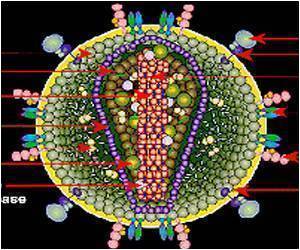
Folds are the structural building blocks of proteins, that give them their complex, three-dimensional shapes. Using advanced bioinformatics methods, the researchers identified 442 protein folds that are shared between cells and viruses, and 66 that are unique to viruses.
Study leader professor Gustavo Caetano-Anolles from the University of Illinois at Urbana-Champaign said, "Viruses also have unique components besides those that are shared with cells. In fact, the analysis revealed genetic sequences in viruses that are unlike anything seen in cells."
The researchers said, "The data also suggested that at some point in their evolutionary history, most viruses gained the ability to encapsulate themselves in protein coats that protected their genetic payloads, enabling them to spend part of their life-cycle outside of host cells and spread."
Some researchers have argued that viruses are non-living entities, bits of DNA and RNA shed by cellular life. They point to the fact that viruses do not replicate (reproduce) outside of host cells, and rely on cells' protein-building machinery to function.
Caetano-Anolles said, "But much evidence supports the idea that viruses are not that different from other living entities. Many organisms require other organisms to live, including bacteria that live inside cells, and fungi that engage in obligate parasitic relationships, they rely on their hosts to complete their lifecycle. And this is what viruses do."
Advertisement
Source-IANS










